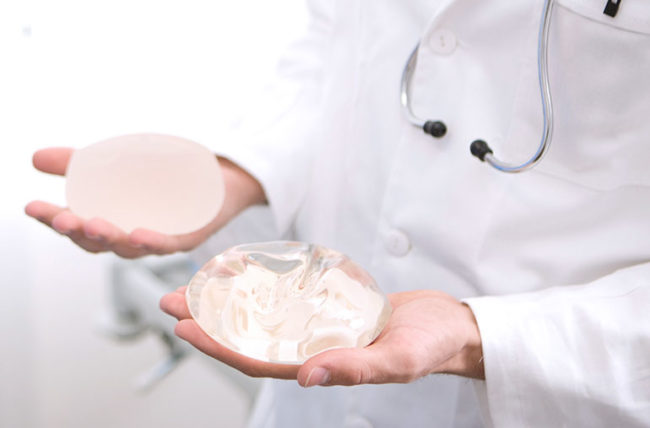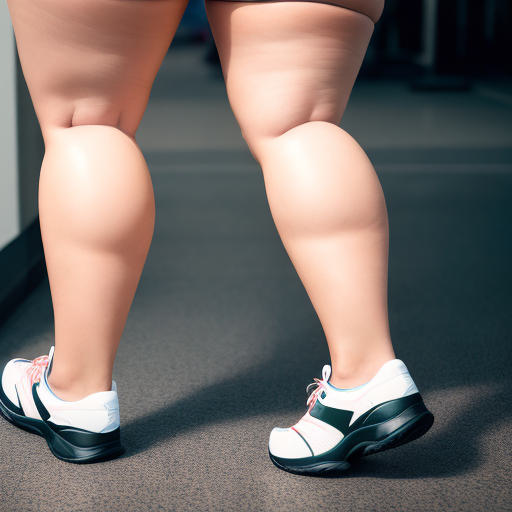Tummy Tuck Painful? Secrets to a Comfortable Recovery
Posted on: March 18, 2024
Understanding Tummy Tuck Pain
Pain Types
After a tummy tuck, a major cosmetic surgery for removing loose skin from the stomach, patients often experience two main types of discomfort: sharp pains and dull aches. Sharp pains usually occur around the surgical site, especially near the belly button or along incision lines in the abdominal area. These might feel like sudden, intense stabs of back pain that come and go, testing your pain tolerance with each sensation.
Dull aches, on the other hand, are more constant and spread across the stomach region, from the back pain area to the belly button, challenging one’s pain tolerance and often requiring a pain reliever. They result from the overall strain on muscles and tissues during surgery, especially in procedures like a tummy tuck where the incision in the stomach can lead to back pain. Both pain types are normal reactions to the procedure.
Pain Causes
Pain after a tummy tuck arises primarily from surgical trauma to skin, muscles, and tissues. During the tummy tuck procedure, these structures on the stomach side are cut, stretched, or otherwise manipulated to achieve a flatter belly and alleviate back pain. This causes inflammation and swelling, leading to discomfort.
The body’s natural response to healing can also contribute to pain levels. As it repairs the surgical damage, nerve endings in the treated area become more sensitive.
Pain Duration
Severe pain typically peaks within the first week post-tummy tuck surgery, especially in the back, for the best recovery. Most patients, especially after a tummy tuck or those suffering from back pain, notice the best significant reduction in discomfort within days, but generally within two weeks. However, minor sensations of tightness or soreness in the abdominal area may linger for several months as the body fully heals from the tummy tuck op, which is considered the best solution for back pain.
Pain Management Post-Surgery
Prescription Meds
After a tummy tuck op, prescription pain medications play a crucial role in getting back to feeling your best. They help manage discomfort in the initial days. Most patients receive narcotic pain meds for this purpose. These are strong pain relievers but come with side effects. Thus, their use is usually short-term.
Doctors recommend using these meds for about one to two weeks post-surgery, especially after a tummy tuck or back op. It depends on individual pain tolerance and recovery speed. Patients must follow the prescribed dosage strictly to avoid complications.
Over-the-Counter Relief
As recovery progresses, over-the-counter (OTC) options become viable. Medications like ibuprofen can manage mild to moderate pain effectively. They also reduce inflammation in the back, which is common after such major surgery as a tummy tuck.
Switching to OTC meds typically happens two weeks after the tummy tuck procedure, back to normal activities. However, it’s vital to consult with the surgeon before making any changes to the pain management plan for your tummy tuck or back.
Surgeon’s Guidelines
Following the surgeon’s guidelines for pain management is crucial. They tailor advice based on each patient’s needs and recovery progress. Ignoring these tummy tuck instructions can lead to unnecessary discomfort or even complications.
Patients should communicate openly about their pain levels and concerns. This ensures adjustments to the pain management plan if needed, promoting a smoother recovery process.
Mobility Challenges After Tummy Tuck
Initial Limitations
After a tummy tuck, patients often face initial mobility challenges. The primary reason is to protect the surgical site. This includes the tummy area where excess loose skin was removed.
Early on, bending or stretching the tummy too much can harm the healing process. Patients should avoid sudden movements. They must also be careful when sitting up or lying down, especially with their tummy.
Gradual Movement
Increasing movement gradually is key to a safe recovery. Start with short walks around the room. This boosts blood flow and aids in healing.
Next, try light stretching exercises approved by your doctor. Always stop if you feel pain or discomfort.

Listening to Your Body
The importance of listening to one’s body cannot be overstated during this time. Pain signals should not be ignored. They indicate when to slow down or rest.
Rushing the recovery can lead to setbacks or complications. It’s better to progress slowly than to risk injury.
Strategies for Standing Up Straight
Exercise Routine
After a tummy tuck, regaining the ability to stand up straight can be challenging. The body needs time to heal, and certain exercises can aid this process. Initially, light walking is beneficial. It helps reduce pressure on the tummy surgical area and promotes circulation. As healing progresses, incorporating gentle stretching exercises becomes crucial. They help loosen tightened muscles around the abdomen (tummy) and lower back.
Gradually, patients can add specific strengthening exercises targeting the core and back muscles. These exercises support the spine and assist in achieving an upright posture faster. However, it’s important to avoid heavy lifting or any strenuous activity that might strain the abdominal area during the early recovery phase.
Supportive Garments
Wearing supportive garments plays a significant role in easing the journey towards standing up straight post-surgery. These garments offer compression to the operated area, reducing swelling and providing much-needed support to weakened muscles. They also help distribute body weight evenly, lessening the load on any one side of the body.
By wearing these garments as recommended by their surgeon, patients find it easier to gradually straighten their posture without excessive discomfort.
Timeline Expectations
Patients often wonder about the right timeline for overcoming the hunched posture common after a tummy tuck. It varies from one individual to another but generally spans a few weeks to several months. Within the first month, most individuals notice significant improvements in their ability to stand up straighter with reduced discomfort.
It’s essential for candidates to follow their surgeon’s advice closely throughout this period. Patience and adherence to suggested routines play a crucial part in achieving desired physique goals within a reasonable timeframe.
Timeline for Feeling Normal Again
Initial Days
The first few days after a tummy tuck are often the most challenging. Patients typically experience significant discomfort. This period requires strict adherence to pain management protocols provided by the surgeon.
Rest is crucial during this phase. It aids in speedy recovery. Most people start feeling a bit better each day.
First Week
By the end of the first week, patients notice a reduction in pain. They begin to move around more comfortably. However, engaging in normal activities remains off-limits.
It’s essential to follow the surgeon’s advice closely during this time. Doing so ensures proper healing and prevents complications.
Two Weeks
Around the two-week mark, many individuals feel significantly better. They can perform light activities but should avoid any strenuous tasks.
This period marks an important milestone in recovery. Patients often report feeling more like themselves, although not yet at 100%.
Six Weeks
Six weeks post-surgery is a critical point for many. By now, most of the major discomfort has subsided. Patients can gradually return to more normal activities, including some forms of exercise.
It’s vital to listen to your body and not rush this process. Patience plays a key role in full recovery.
Managing Post-Op Swelling
Compression Garments
Compression garments play a crucial role in managing swelling after a tummy tuck. They apply even pressure on the abdomen, reducing the risk of excess skin sagging and blood clot formation.
Patients should wear these garments as directed by their surgeon. Typically, this means around the clock for the first few weeks post-op, except when bathing.
Elevation Technique
Elevating the affected area can significantly reduce swelling. For optimal results, patients should rest with their torso slightly raised and legs bent at the hips.
This position facilitates fluid drainage and decreases swelling faster. It’s particularly effective during sleep or when lying down for extended periods.
Dietary Adjustments
Certain foods can exacerbate swelling, while others promote healing. Patients should increase their intake of proteins, vitamins, and minerals to support tissue repair and reduce inflammation.
They should also limit salt intake to prevent water retention, which can worsen swelling. Hydration is key; drinking plenty of water helps flush out toxins and reduces swelling.
Swelling Timeline
Swelling is most pronounced in the first few weeks following surgery but gradually subsides over time. Most patients notice a significant reduction in swelling within four to six weeks post-op.
It’s normal for some degree of swelling to persist for several months as the body heals fully. However, sudden increases in swelling or pain on one side, especially the left side, may indicate complications such as blood clots and warrant immediate medical attention.
Importance of Support System
Emotional Aid
Having a strong support system is crucial. It helps the person recover not just physically but emotionally too. Loved ones can provide comfort and encouragement, which are vital during this time.
A patient might feel down or anxious. Here, emotional support becomes key. It reassures them that they are not alone in their journey.
Physical Help
Physical assistance is equally important. Tasks like moving around or changing dressings may require help. Family and friends play a significant role here.
They ensure the patient’s safety by aiding in daily activities. This reduces the risk of complications from straining the core muscles.
Professional Guidance
Access to professional support is indispensable. Follow-up appointments allow for monitoring progress and addressing concerns.
Medical teams offer advice on managing pain and swelling effectively. They also guide on how to care for oneself post-surgery, complementing the support from loved ones.
Enhancing Comfort During Recovery
Clothing Choices
Loose, soft clothing is key. After a tummy tuck, the skin and muscles are sensitive. Tight or rough fabrics can irritate the healing tissues. Opt for cotton shirts and pants that don’t press on your abdomen. This reduces discomfort and supports the healing process.
Wearing compression garments as recommended by your surgeon also helps. They reduce swelling and provide support to the repaired areas. Patients often feel a sense of security wearing these, easing their recovery journey.
Bedding Setup
Invest in good-quality bedding. Your bed becomes a primary space during recovery from cosmetic surgery. Soft, supportive pillows can make a significant difference. Arrange them to prop up your back and legs, promoting blood flow and reducing swelling.
Consider an adjustable bed if possible. It allows you to easily change positions without straining your abdomen or back. This flexibility can significantly enhance comfort during the recovery period.
Pain Relief Techniques
Beyond medications, explore gentle pain relief methods. Ice packs can reduce swelling and provide temporary pain relief. However, always wrap them in cloth to avoid direct contact with the skin.
Gentle massage around the healed areas can improve circulation and ease tightness. Ensure this is done by a professional or under guidance, as improper handling could harm the healing process.
Incorporating these practices into your aftercare routine fosters a more comfortable recovery experience. Following aftercare instructions closely and addressing concerns promptly with your healthcare provider ensures optimal health outcomes.
Closing Thoughts
Undergoing a tummy tuck can be a transformative experience, but it comes with its challenges, notably pain and discomfort during the recovery process. The journey from understanding tummy tuck pain to enhancing comfort during recovery underscores the importance of preparedness and proactive management. Effective pain management, mobility improvement strategies, and a strong support system are crucial for a smoother recovery. They not only alleviate physical discomfort but also contribute significantly to the patient’s emotional well-being.
The path to feeling normal again after a tummy tuck requires patience, adherence to post-operative care instructions, and an optimistic outlook. Individuals considering this procedure should engage in thorough research and consult with experienced healthcare professionals to set realistic expectations and develop a comprehensive recovery plan. For those on this journey, remember, the discomfort is temporary, but the results can be life-changing. Seek advice, share experiences, and support one another through recovery.
Frequently Asked Questions
Is a tummy tuck painful?
Yes, experiencing pain after a tummy tuck is common. However, the intensity varies among individuals. Pain management strategies are available to alleviate discomfort during recovery.
How can I manage pain after a tummy tuck surgery?
Pain post-tummy tuck can be managed with prescribed medications, cold compresses, and following your surgeon’s guidelines on rest and movement.
What mobility challenges might I face after a tummy tuck?
Post-surgery, patients often experience difficulty standing up straight and moving around freely due to tightness and discomfort in the abdominal area.
Are there strategies for standing up straight after a tummy tuck?
Yes, gradually increasing movement and using supportive garments can help in regaining posture. Physical therapy may also be recommended.
How long until I feel normal again after a tummy tuck?
Recovery times vary, but most patients start feeling closer to their normal selves within 6 weeks post-operation, with continuous improvement over time.
How do I manage swelling after a tummy tuck?
Managing swelling involves wearing compression garments, keeping the surgical area elevated when possible, and following your doctor’s advice on activity levels.
Why is having a support system important during recovery from a tummy tuck?
A support system provides emotional encouragement and practical help with tasks you may temporarily find challenging, enhancing your comfort and recovery experience.





